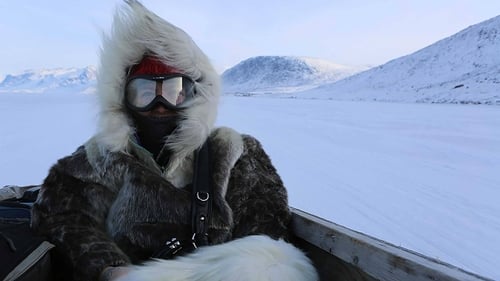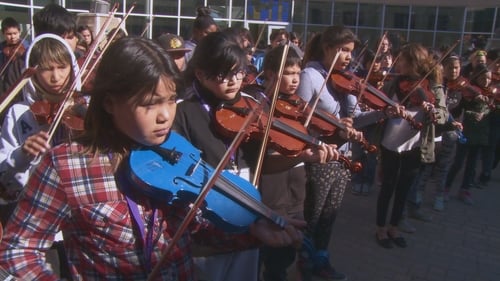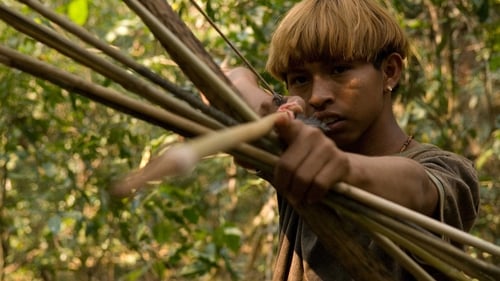
Река, протекающая сквозь густые джунгли, несет замученного иезуитского священника, привязанного к грубо сколоченному кресту. Распятие проносится через скалистые стремнины и в один момент, полный ужаса и завораживающей красоты, обрушивается вниз с 70-метровой высоты и исчезает в рокочущем водопаде. Этой сценой открывается один из самых зрелищных фильмов в истории кино, о человеке со шпагой и человеке в капюшоне, объединившихся, чтобы защитить индейское племя от колониальных империй 18-го века…

Место действия фильма — бразильские джунгли. Племя индейцев похищает пятилетнего мальчика, в то время как его отец, американский инженер, занят строительством дамбы. В течение десяти лет отец ищет сына, и после многочисленных приключений, полных экзотики, они встречаются в дебрях Амазонки.

В индейской резервации Ред Кроу начали оживать мёртвые: выпотрошенная рыба, пристреленная из жалости собака. Зараза не обошла стороной и людей, которые, превратившись в безмозглых агрессивных тварей, стали бросаться на здоровое население. Но у коренных жителей Америки обнаружился иммунитет к неизвестному вирусу. Теперь они вынуждены жить на ещё меньшей огороженной территории и всеми силами противостоять зомби-чуме, ведь даже при устойчивости к этому страшному заболеванию быть съеденным заживо — то ещё удовольствие.

Основанная на реальных событиях, драматическая история любви разыгрывается под величественной сенью грозного вулкана на острове Танна, который принадлежит крошечному тихоокеанскому государству Вануату.

Неожиданный и неоднозначный взгляд на историю развития цивилизации. Программа раскрывает огромный риск, которому подвергает себя человечество, когда использует современное программное обеспечение в применении к примитивному древнему «компьютеру», коим является наш мозг, практически не изменившийся за 50 тысяч лет. Мы отправимся в грандиозное путешествие, чтобы проследить свой путь от обитателя пещер до покорителя космоса. Рональд Райт - автор бестселлера «Краткая история прогресса», положенного в основу фильма – демонстрирует, с какой регулярностью человечество наступает на грабли прогресса: придумав технологию для сегодняшней потребности, оно завтра же вынуждено расплачиваться за содеянное. В фильм вошли поучительные сюжеты о китайском автомобильном клубе, об акулах большого бизнеса с Уолл-стрит и экологической полиции, которая пытается спасти леса в бассейне Амазонки. Современной цивилизации грозит гибель от чрезмерного потребления, а другой планеты в запасе у нас нет.

Этот документальный фильм рассказывает об общинах национальных меньшинств в Новой Шотландии и их борьбе с властями из-за опасного воздействия промышленных отходов.

For ancient Mayans, cocoa was as good as gold. For subsistence farmer Eladio Pop, his cocoa crops are the only riches he has to support his wife and 15 children. As he wields his machete with ease, slicing a path to his cocoa trees, the small jungle plot he cultivates in southern Belize remains pristine and wild. His dreams for his children to inherit the land and the traditions of their Mayan ancestors present a familiar challenge. The kids feel their father's philosophies don't fit into a global economy, so they're charting their own course. Rohan Fernando's direction tenderly displays a generational shift, causalities of progress in modern times and a man valiantly protecting an endangered culture. Breathtaking vistas of lush rainforests contrast with the urban dystopia that pulled Pops children away from him. Will one child return to carry on a waning way of life

Journalist Dermi Azevedo has never stopped fighting for human rights and now, three decades after the end of the military dictatorship in Brazil, he's witnessing the return of those same practices.

With "sealfies" and social media, a new tech-savvy generation of Inuit is wading into the world of activism, using humour and reason to confront aggressive animal rights vitriol and defend their traditional hunting practices. Director Alethea Arnaquq-Baril joins her fellow Inuit activists as they challenge outdated perceptions of Inuit and present themselves to the world as a modern people in dire need of a sustainable economy.

A feature documentary about the journey of mankind to discover our true force and who we truly are. It is a quest through science and consciousness, individual and planetary, exploring our relationships with ourselves, the world around us and the universe as a whole.

In this era of “reconciliation”, Indigenous land is still being taken at gunpoint. INVASION is a new film about the Unist’ot’en Camp, Gidimt’en checkpoint and the larger Wet’suwet’en Nation standing up to the Canadian government and corporations who continue colonial violence against Indigenous people. The Unist’ot’en Camp has been a beacon of resistance for nearly 10 years. It is a healing space for Indigenous people and settlers alike, and an active example of decolonization. The violence, environmental destruction, and disregard for human rights following TC Energy (formerly TransCanada) / Coastal GasLink’s interim injunction has been devastating to bear, but this fight is far from over.

The territory of Akwesasne straddles the Canada-U.S. border. When Canadian authorities prohibited the duty-free cross-border passage of personal purchases - a right established by the Jay Treaty of 1794 - Kanien'kéhaka protesters blocked the international bridge between Ontario and New York State.

Legendary documentary filmmaker Alanis Obomsawin provides a glimpse of what action-driven decolonization looks like in Norway House, one of Manitoba's largest First Nation communities.

CREE CODE TALKER reveals the role of Canadian Cree code talker Charles 'Checker' Tomkins during the Second World War. Digging deep into the US archives it depicts the true story of Charles' involvement with the US Air Force and the development of the code talkers communication system, which was used to transmit crucial military communications, using the Cree language as a vital secret weapon in combat.

This documentary digs into the stories of Indigenous women and families to reclaim their Indian Status through their fight for the elimination of sex-discrimination in the Indian Act. It highlights the impacts of the law on individuals, families and communities. Since the passing of Bill S-3 and its amendments, thousands of Indigenous people are now eligible for Indian Status.

In Nordestina, a small town lost in the Brazilian badlands, young Karina dreams of becoming an actress and leaving to explore the world. Before losing his love, Dona Nazaré’s son, Antônio, takes the first step in a kamikaze crusade to bring the world to Karina. For that, Antônio leaves town and announces, in a TV show that he will set off on a sensational adventure: a trip into the future, starting from Nordestina’s square. A story where dreams contradict reality, geographical and political conditions threaten to block life, and love plays the part of the transforming element.

Mato Grosso do Sul, Brazil, the present. When a young Guarani-Kaiowá woman commits suicide, Nádio leads his community to form a protest camp on the borders of a local farm that sits on their ancestral burial ground.

In this follow-up to his 2003 film, Totem: the Return of the G'psgolox Pole, filmmaker Gil Cardinal documents the events of the final journey of the G'psgolox Pole as it returns home to Kitamaat and the Haisla people, from where it went missing in 1929.

The Blackfoot bareback horse-racing tradition returns in the astonishingly dangerous Indian Relay. Siksika horseman Allison Red Crow struggles with secondhand horses and a new jockey on his way to challenging the best riders in the Blackfoot Confederacy.

















